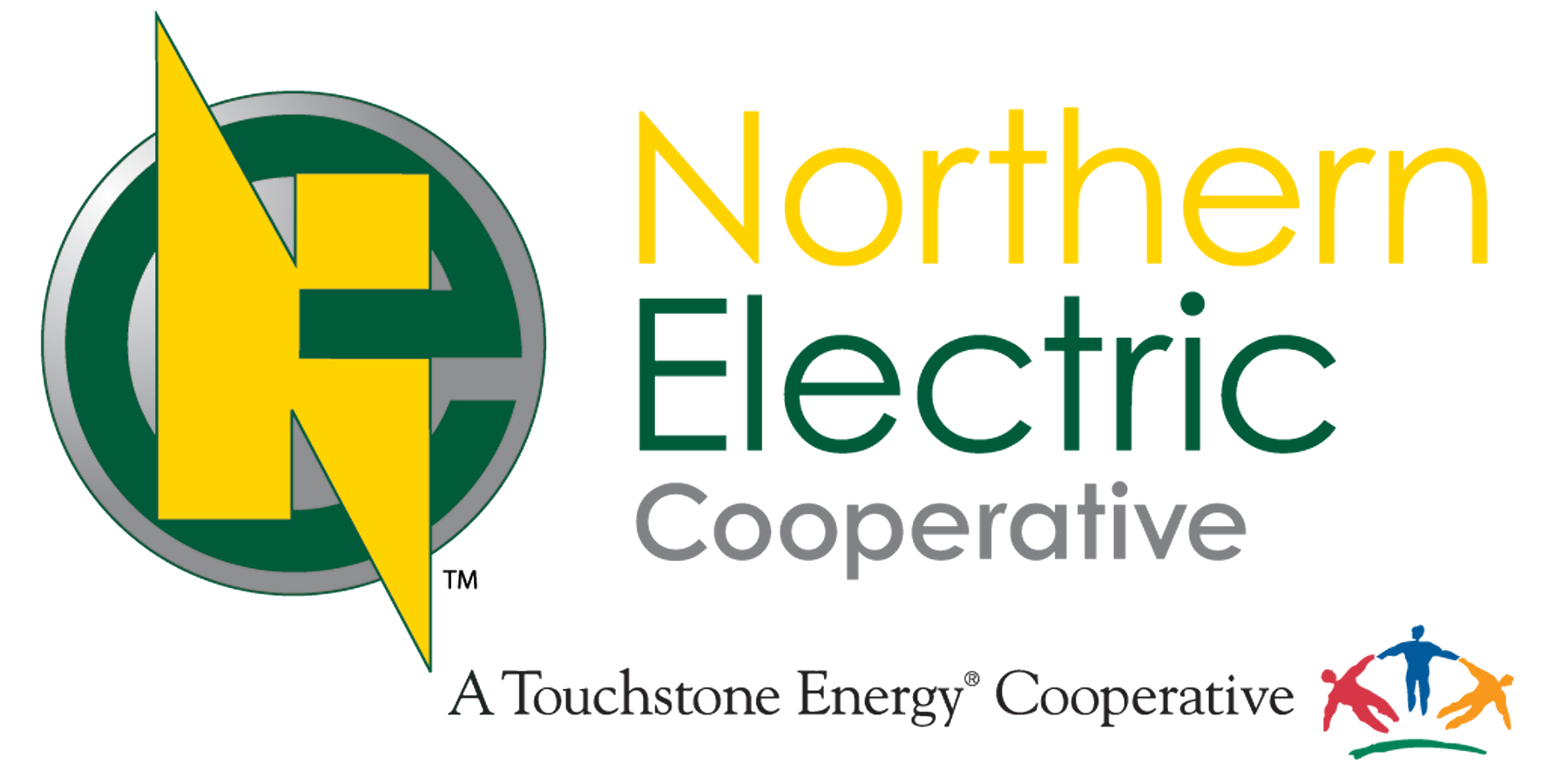Learn About Solar
As your Touchstone Energy cooperative, Northern Electric is your source for energy and information. Since interest in solar generation is growing, we have developed answers to some of the most frequently asked questions you might have about solar.
Considering Solar? Contact the Co-op
Northern Electric Cooperative encourages any member considering solar power to contact a member services representative at the office before purchasing or installing a system. There are several steps to take to ensure the system is installed properly and members are receiving the most value from their system.
Call 605-225-0310 before purchasing or installing a system.
How Do We Generate Electricity From The Sun?
Solar energy systems work when sunlight hits a solar photovoltaic module (solar panel or PV panel) and causes an electric current to flow. The current produced from the PV panels is controlled and regulated by an inverter, which converts direct current to alternating current, needed for use by household appliances. The electrical panel is where the power gets distributed throughout your house; any excess electricity may be sent from the panel back to your cooperative's power grid.
How Much Electricity Can I Generate?
That depends on several factors.
- The size of the system. You can determine how much electricity you want to produce; then size your system accordingly. Note that you can start out small and add on. A system that will generate 100% of your energy needs is expensive, so most systems are sized to generate only a portion of your home's needs.
- Your site. If you have a shade-free area from 9 a.m. - 3 p.m. you'll be able to collect more sun and produce more energy than if your site is shaded.
- Your region. The more sunny days in your area, the more electricity you'll be able to generate. For example, systems in the Southwest produce more electricity per year than in the northeast. You can find online calculators to help answer this question in more detail.
Will Northern Electric Cooperative Buy Excess Energy Produced With A Solar System?
A majority of the solar PV systems installed in the region need to be grid-connected systems so co-op members can continue to receive power when their system is not producing solar energy. That means a system installed at a home or business is connected to Northern Electric's grid of power lines so electricity can flow both ways (to your home from the cooperative, and from your system back to the electrical grid). Particularly on sunny days when your energy use may be low, your system may produce excess energy that can flow back to the grid and will be purchased back by Northern Electric.
Northern Electric purchases energy generated by a PV system at the avoided power cost. The avoided power cost is the wholesale cost of power that Northern Electric 'avoids' buying from co-op-owned power plants because the co-op is buying from a member at the end of the line. This cost is less than the retail per kilowatt-hour rate paid by the member every month because Northern Electric still needs to pay for the poles, wires, and infrastructure to connect the solar PV system to the grid. Members with grid-connected solar systems must sign an interconnection agreement with Northern Electric Cooperative.
How Much Does A Solar PV System Cost?
The price of PV components varies depending on the size of the system, type and quality of the components purchased, and the complexity of the system selected. The good news for consumers is that the cost of solar equipment has continued to decline over the past several years. An average 4 kW system may cost between $10,000 and $20,000 before any credits or incentives are applied. This is based on a typical installed cost of $2.50 to $5 per Watt of distributed generation capacity. To determine costs, look for online calculators or get bids from reputable installers.
How Long Is The Payback Period On A Solar PV System?
The payback period can range from fewer than 10 years to more than 20 years, depending on the system cost, available rebates and incentives, the amount of electricity produced, and the purchase price of the electricity generated by the system.
How Long Do Solar PV Systems Last?
Certified PV products and systems generally are reliable, with a life expectancy of about 30 years. Manufacturers test PV panels for hail impact, high wind, and freeze-thaw cycles to represent real-life situations. Most manufacturers offer 20 to 25-year warranties for panels; extended warranties may be available at an extra cost. PV panels may outlast the roof they are attached to. Make sure your roof is in good shape or budget for replacement during the life of the system.
How Can I Know If a Solar PV System Will Work On My House?
To begin, look at factors such as which direction your home faces, the condition of your roof, and obstructions such as trees and other buildings that may block the sun during the peak generation period of 9:00 a.m. - 3:00 p.m. Solar contractors can provide a more detailed analysis on what to expect, and Northern Electric Cooperative can offer advice on placement.
If My House Is Not Sited For Solar Are There Other Renewable Options?
Northern Electric Cooperative offers a Renewable Energy Credit (REC) program if your house or apartment is not a suitable location for solar. Members can purchase RECs from Northern Electric to offset their electric use with renewable energy. RECs are generated by renewable resources that are owned by the cooperative. For more information click this link to learn about the REC Program.
More Information About Solar
The following documents are provided by Touchstone Energy to answer more questions about solar PV systems. Click on one of the hyperlinks to view and download the document.
10 Steps To Take Before Installing Solar
